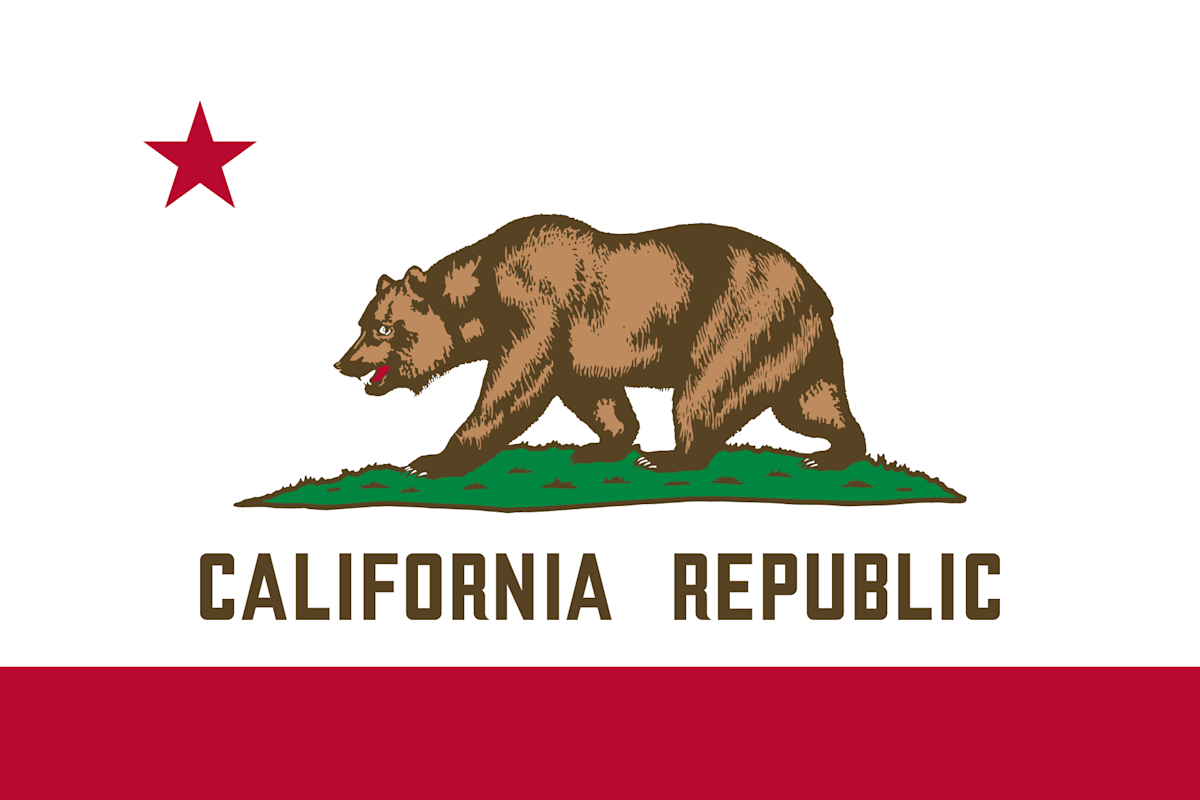California Tort Laws

If you have been injured by a defective product, taken advantage of by an unethical business, or experienced medical conditions after exposure to dangerous chemicals, chances are that you are not the only victim. When a business, property owner, or other party with an obligation to the public acts negligently in a way that causes multiple people to suffer injuries or losses, the wronged parties have the right to collectively pursue civil action. This is known as a mass tort.
Throughout this page, you will learn what to expect when joining a mass tort lawsuit. You will learn some of California’s laws regulating common causes of mass torts, the statutes of limitations for those laws, how business insurance works in California, and how the state considers fault. At the bottom, you will also find links to some sources that you may find helpful as a potential plaintiff.
California Professional Negligence Law
If you and other customers feel that you received substandard service from a hired professional in any field, you may be eligible for professional negligence damages.
California defines professional negligence as a failure by a professional, or someone representing themselves as a professional, to adhere to the standard of care expected from practitioners in their field. Some parties commonly named in professional negligence suits are attorneys, accountants, and stockbrokers. Some professionals, such as attorneys, have specialized negligence statutes.
Negligence from one of these professionals could put someone’s finances at serious risk. If a group of plaintiffs suffered any economic or noneconomic losses as a result of this breach in the standard of care, they could be owed a compensatory settlement.
Statutes of limitations for professional negligence differ based on the field in question. For legal malpractice, the statute of limitations is one year from discovery or four years from the date that the malpractice occurred. When not otherwise specified, a plaintiff cannot sue for professional negligence more than two years after discovery.
Source:
https://codes.findlaw.com/ca/code-of-civil-procedure/ccp-sect-339/
https://www.justia.com/trials-litigation/docs/caci/600/610/
California Premises Liability Law
California property owners, including businesses, are expected to adhere to a standard of care when maintaining their premises. They could be liable for any resultant injuries if they fail to address any dangerous conditions on their property.
Some common premises liability torts include slip and falls, carbon monoxide poisoning, fire hazards, and structural collapse. Since these injuries can usually be avoided through careful property maintenance, the property owner may owe damages to those injured.
A group of plaintiffs who intend to pursue a premises liability lawsuit will have two years from the date of their injury, or the date of the discovery of the property owner’s negligence, to do so.
California Product Liability Law
Product liability is a common cause of mass tort lawsuits. Under California law, a company that fails to exercise reasonable care in ensuring that its products will not harm users can owe damages to injured consumers.
A court determines product liability based on a few factors. Many consumer products present some risk of injury to the user. If a consumer uses a product in a dangerous manner and gets injured, their chances of winning an injury claim are weak. Therefore, courts consider multiple factors when determining whether or not a manufacturer is liable for consumer injuries.
If an element of a product’s design presents the user with more risk than it does potential benefit, the manufacturer could be found negligent. For example, a firearm manufactured without a safety would pose a serious risk and no benefit to a user and would fail the risk-benefit test. The manufacturer could owe compensatory damages to anyone injured by their products.
A manufacturer is also likely to be on the hook for damages if their product is defective. A defect that harms a consumer, such as a faulty brake line in a car, does not have to be an intentional design choice for the manufacturer to be liable. Allowing dangerously defective products to go to market is indicative of negligence.
Finally, even if a product is free of any hazardous defects or design choices, the company that produces it can be held legally responsible for consumer injuries if they fail to include adequate warning labels about safe use. For example, a gas-powered electrical generator should come with warnings against indoor operation. Someone who suffers carbon monoxide poisoning after operating a generator without such a warning label may have grounds for a product liability claim.
If you are interested in pursuing a mass product liability tort, you and the other plaintiffs will have two years to sue for personal injury and three years for property damage. As with other personal injury claims, the statute of limitations begins at the date of discovery rather than when the injuries or damage occurred.
Source: https://www.findlaw.com/state/california-law/california-product-liability-laws.html
California False Advertising Law
A business that advertises its products or services in a way that misleads consumers may owe those consumers a settlement for false advertising. False advertising includes misleading customers about the nature or the price of the product or service the business provides. A misleading ad placed in any venue, including the internet, a newspaper, television, a billboard, or even a verbal “public outcry or proclamation,” warrants penalties for false advertising
Violation of the false advertising law is a misdemeanor and can lead to six months in jail, a $2,500 fine, or both. Additionally, consumers duped by false advertising can sue the responsible party for damages.
Exaggerated claims, or “puffery,” are not considered false advertising. For example, an auto detailing service that claims to provide the most thorough cleaning service in town would not be found guilty of false advertising even if their claim had no objective evidence to support it. However, if the same business claimed that their basic service included an engine bay steam-wash when it did not, they could face penalties.
The statute of limitations for false advertising claims in California is three years from the date of discovery.
https://leginfo.legislature.ca.gov/faces/codes_displaySection.xhtml?lawCode=BPC§ionNum=17500.
California Safe Drinking Water and Toxic Enforcement Act
In 1986, California passed the Safe Drinking Water and Toxic Enforcement Act, also known as Prop 65. This act requires the state to keep a list of carcinogens and chemicals that can affect pregnancy. Any product containing a significant concentration of these substances must have a warning label. The act also states that someone who has been affected by the presence of toxic chemicals in a consumer product has the right to sue the company responsible.
A company that violates Prop 65 by failing to warn consumers about toxic substances can be charged with fines of up to $2,500 per day per violation. Courts often define a violation as one unit of a non-compliant product. A company that stocks 100 units of a product without proper warning labels for ten days could theoretically be fined $2.5 million.
Plaintiffs in a Prop 65 lawsuit are entitled to 25% of the civil penalties. In the above example, plaintiffs would each receive a share of a total settlement of $625,000.
Prop 65 violations have a statute of limitations of one year from the date of discovery. Governmental agencies, water utilities, and small businesses with fewer than nine employees are not subject to Prop 65 fines.
Someone who wishes to report a violation of Prop 65 can do so online through the Office of the Attorney General.
Source:
https://oag.ca.gov/prop65/regulations
https://leginfo.legislature.ca.gov/faces/codes_displaySection.xhtml?lawCode=CCP§ionNum=340
California Comparative Negligence Law
California is a pure comparative negligence state. This means that a plaintiff partially responsible for their own injuries or losses can still collect a settlement from the defendant so long as the defendant shares some of the fault.
Pure comparative negligence means that even a plaintiff who shares a greater percentage of fault than the defendant can receive damages. Those damages will be reduced in accordance with the defendant’s share of the fault.
For example, a grocery store customer might injure themselves after climbing a broken ladder marked as for employees only. If that person decides to file a slip-and-fall claim, the court might decide that they are 80% responsible for their own injuries because they ignored warnings and that the store is 20% responsible for failing to repair or replace the broken ladder. If the defendant’s damages add up to a $10,000 settlement, they will receive 20% of that settlement, totaling $2,000.
Source: https://www.justia.com/trials-litigation/docs/caci/400/405/
California Business Liability Insurance Requirements
California does not require every business operating within the state to carry any amount of liability insurance. However, requirements are stricter for certain industries, and a property owner or company that leases spaces to businesses might require their tenants to subscribe to coverage.
A California business that owns and operates vehicles will have to subscribe to commercial auto insurance. The state requires that auto insurance policies for passenger vehicles provide a minimum of $15,000 per accident, $30,000 in aggregate, and $5,000 for personal injury, and that policies for large commercial trucks provide coverage for at least $750,000 per vehicle for general freight. These liability requirements increase to $1,000,000 for trucks carrying oil and $5,000,000 for trucks carrying other hazardous materials. Companies that haul household goods using trucks only need $300,000 per vehicle in liability coverage.
California businesses do not have to be insured for personal injury, property damage, professional negligence, or other common business torts. However, since these lawsuits can be costly for businesses, many purchase coverage regardless.
How Much Can Someone Sue For an Injury in California?
California generally does not place a cap on damages recoverable by plaintiffs in a personal injury lawsuit, whether filed individually or as a mass tort. However, there are some exceptions.
Noneconomic damages for medical malpractice claims are capped in California. While a plaintiff can recover full compensation for their economic losses in a malpractice case, they can only receive $350,000 for the non-financial impacts of their injuries, including pain and suffering and loss of enjoyment in life. According to new state legislation, this cap will increase by $40,000 annually for ten years, meaning that it will eventually reach $750,000.
Noneconomic damages for wrongful death in a malpractice case are capped at $500,000, which will increase annually by $50,000 for a decade until reaching $1 million. There is no limit to the economic damages a plaintiff can recover, such as compensation for burial costs and loss of future income.
The Statute of Limitations in California
California’s statute of limitations for mass torts depends on the specifics of your claim. Since mass torts can cover a number of different legal violations, there is no single statute of limitations.
The statute of limitations usually begins when the plaintiff discovered, or when a reasonable person discovered, that their injuries or losses were the result of someone else’s negligence. In the case of mass tort claims, which concern multiple plaintiffs, discovery can be subjective and difficult to determine. If your and your fellow plaintiffs’ case was the subject of a news report, or if it was advertised by personal injury lawyers looking for clients, a court might consider the date that it was publicized as the date of discovery.
If a mass tort claim is brought to court as a class action, its statute of limitations is subject to an exception known as American Pipe Tolling. The class action suit essentially pauses the statute of limitations for anyone considered a member of the plaintiff class. Even if the class action suit is dismissed, anyone who would have been able to participate can file their own individual claim. If a product liability class action lawsuit is filed six months from the date of the injury and is dismissed two years later, any injured party can still pursue an individual lawsuit. Although 30 months have passed since the commencement of the statute of limitations, the two years that the claim was in court did not count toward the statute of limitations.
Source: https://www.courts.ca.gov/9618.htm?rdeLocaleAttr=en
Legal Resources for Injured Folks in California
If you have suffered an injury or loss as a result of another party’s negligence, help is available. While you search for a suitable mass tort attorney for your claim, you can use the following resources to report a business’s unethical behavior, research a company’s legal status and record of customer satisfaction, and learn about the programs keeping Californians safe from hazardous materials.
Better Business Bureau
The Better Business Bureau is a nonprofit organization that seeks to inform consumers about a business’s practices. Someone wronged by a company’s unfair or unlawful practices can file a report with the BBB and post a review describing their experiences. Businesses sometimes reach out to these customers to resolve their complaints. The BBB’s website grades companies on a scale of A+ to F- based on previous consumer experiences, which potential customers can research to make an informed decision about whether or not to patronize a company.
Visit https://www.bbb.org/us/ca
California Department of Consumer Affairs
California’s Department of Consumer Affairs regulates businesses within the state, ensuring that consumers receive fair and legal treatment when buying products or services. Their website allows users to file complaints against a variety of businesses. Their license search also allows you to ensure that a business is verified by the state board or bureau regulating its specific industry.
You can use the consumer information center to learn more about business regulations, which can be helpful if you’re unsure whether or not a business’s practices are illegal.
Visit: https://www.dca.ca.gov/
California Department of Toxic Substances Control
California’s DTSC ensures that residents are protected from exposure to hazardous chemicals. They are in charge of regulating how toxic materials are disposed of, cleaning up hazardous waste, and investigating and holding accountable anyone who violates state or federal toxic substance laws.
Their website allows users to report hazmat emergencies, inform themselves about the safe disposal of hazardous household objects, and learn how compliant nearby hazardous waste facilities are with state regulations. Californians can also join public forums to stay up-to-date and provide feedback on the DTSC’s latest initiatives.
Expertise.com StaffAuthor
Step into the world of Expertise.com, your go-to hub for credible insights. We don't take accuracy lightly around here. Our squad of expert reviewers, each a maestro in their field, has given the green light to every single article you'll find. From rigorous fact-checking to meticulous evaluations of service providers, we've got it all covered. So feel free to dive in and explore. The information you'll uncover has been stamped with the seal of approval by our top-notch experts.


![Mass Tort Lawsuit Timelines and Outcomes: What To Expect [2023] DUP IMAGE](https://images.ctfassets.net/k00sbju4hbzq/2sJ6vpBxbkuRa0riSN98dm/34b0353b8eff400e185a2ad51f27b1a1/Depositphotos_226254218_XL.jpg?fit=fill&w=384&q=75)

